Jurors’ Comments
審査講評
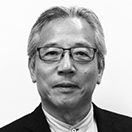
Kenji Kuze
(Japan)
- Pottery Artist
- Former President of Kanazawa College of Art
I joined the panel for the Preliminary Assessment for the International Exhibition of Glass Kanazawa in 2016 for the first time. The images of some 370 submitted works were clear with a few exceptions. The assessment went smoothly with all the jurors talking to each other about each applicant’s data, inspiration and techniques. It was quite hard work to assess all the images of the works over a long time. However I was so fascinated by the power of each work that time passed quickly and I even forgot how tired I was. I made the main point of my assessment the purpose of this exhibition - “to explore the potential of glass from daily utensils to new artistic expressions” and I selected creative, original works based on broad and free conceptions. I believe that Art is meant to express and introduce novel and unconventional ‘things’, ‘events’ and ‘moments’. It is naturally a challenge, as it needs a variety of experiences, experiments and adventures. Among the submitted works, I persistently looked for those with the ability to shatter established notions of glass art. I was looking for ‘something’ I had never seen before. As a result, most of the selected works at the Preliminary Assessment are created by Japanese glass artists and they are outstanding both in quality and quantity. It is not surprising that Japanese glass artists have no difficulty in applying and that many had applied for the exhibition this time. I was stunned by the high quality and diverse expressions of the Japanese glass artists’ works. The ratio of the selected works at the Preliminary Assessment between the works from Japan and those of overseas clearly shows that fact. Recently more and more glass making classes and private glass studios have been opened in Japan. The more glass craftsmen, the more diversity and better techniques. The more competition among the artists, the more artists apply themselves to their art. Regarding the works submitted from abroad, the works from Estonia and Denmark are of experimental spirit in a variety of forms. The works from Germany and Hungary show powerful forms with strong presence. However those from China, Korea and Taiwan lacked the necessary experiments.
Outside glass art, other fields in arts and crafts that at one time flourished, now face a slow-moving season, while glass art’s progress has remained interesting. Continuing this growth may be difficult, but it is worth the effort. I hope that this International Exhibition of Glass in Kanazawa will keep the revolution going.
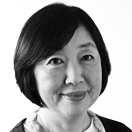
Etsuko Nishi
(Japan)
- Glass Artist
I would like to express my gratitude for the precious opportunity to join the panel of the Preliminary Assessment for the International Exhibition of Glass Kanazawa 2016. Even on an international level, it is rare for an exhibition to have been continuously held for over thirty years, since the first exhibition in 1984. The organizers’ efforts to keep up with the global trends of contemporary glass art should be admired.
It is a great pleasure that this international exhibition received applications from a broad range of nations and regions including Arab and East European countries, thanks to the internet application system. When I looked at the digital images of the submitted works, I felt each individual artist’s inspiration and expression, rather than the characteristics of their nations and regions. Is it because the world has increasingly become globalized over these past ten years? I felt that the ideas being expressed in the works were universal to all human beings.
All of the works selected at the Preliminary Assessment show diversity in expression and improvement in techniques. I felt the perfect harmony among the artists’ aesthetic ideas, technical goals and material research. In particular, and more so than from the Western artists, from the Japanese artists, I felt the path of their long history of arts and crafts, as well as their own progress.
This year the GAS (Glass Art Society) in the United States celebrated its 45th anniversary. I attended the lecture held in Corning. They showed works from the perspectives of the co-existence and collaboration of science and art. That assured me that glass is a material which will keep evolving. I very much look forward to seeing how the submitted works for this exhibition will change and how the young glass artists will handle glass as a material. I also feel that the exhibition from now on will have to consider whether to limit the material to glass, or to open the door to works as an integration of science and art.
I hope that this International Exhibition of Glass Kanazawa will play a leading role as a pioneer in glass art, and that many more glass artists will target this exhibition and challenge its jurors.
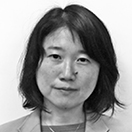
Akiyo Sakuma
(Japan)
- Curator of
Koganezaki Crystal Park Glass Museum
First of all, I would like to express my esteem for the efforts of the organizers for continuing to hold an exhibition on such an international scale, that contributes to the improvement of glass art.
For this year’s exhibition, application was possible via the internet. Approximately 70% of the total number of applications and 80% of overseas applications were submitted through the internet. This trend will only increase in years to come. It is important for both applicants and organizers to prepare the best and easiest online application system.
Previously, I had only had administrative experience with domestic glass exhibition competitions, and this year was my first time on the selection panel. When I looked at all the submitted works together, I was impressed by the huge range of expressions and conceptions that could only be seen at an international exhibition. At the assessment, I felt my responsibility as a juror to select excellent works and tried to examine each work thoroughly by referring, of course, to the images, as well as the written information, if necessary. Honestly speaking, not many works amazed me and as a result, my assessment became quite strict. Even so, many of the works selected at the Preliminary Assessment have innovative forms, strong impact, and unusual and attractive appearances.
In relation to the handling of glass as a material, one work in particular caused great discussion among the jurors. As the purpose of this exhibition says ‘we look forward to receiving a wide variety of excellent glass works…’, we have to decide how to interpret this purpose in assessment. I think that there will be great discussion over the method of interpretation during the assessment.
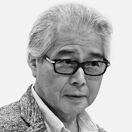
Atsushi Takeda
(Japan)
- Visiting Professor of
Tama Art University
Art Critic
I’m happy to join the Preliminary and Final Assessment panels again this year as a juror. I would like to show sincere respect for the continuation of this international exhibition.
The Final Assessment this time was characterized by our efforts to reach a consensus. We were more conscious of discussion among the jurors for the assessment. This method showed up the differences in each juror’s valuation and clarified the issues under discussion. As a result, all the jurors were satisfied with the results of their communication. I am sure the visitors to the exhibition will appreciate the excellent results of this method when looking at the prize winners.
When we were selecting the prize-winning works, the criteria of each juror’s valuation were original expressions and unique conceptions. These were particularly evident in the winner of the Grand Prize. All the jurors were astounded by this extraordinarily strange object, the likes of which we had never seen before. I felt as if we were confronted by the essence of art; a sense of surprise that is indispensable. It is the promise of the unknown future of glass art.
The data from the competition show some interesting trends. 12 out of 17 prize-winning works are by Japanese glass artists. This ratio between Japanese and overseas artists is exactly the same as that of the previous exhibition in 2013. I think that this ratio shows that the Japanese glass artists’ capability is here to stay. What has drawn our attention is that most prize winners are young artists in their 30’s, and female artists have assumed greater prominence in the world of glass art. It is an encouraging aspect.

Bodil Busk Laursen
(Denmark)
- Glass Critic
- Chairperson of Hempel Glass Museum
- Former Director of Designmuseum
The International Exhibition of Glass Kanazawa has taken place every third year since its inception in 1984 so in 2016 the 13th exhibition takes place. It is a major event within the glass art worldwide and it offers glass artists the opportunity to present their works to an international group of jurors for evaluation and the chance to participate in a distinguished exhibition. Coming from Europe, from the small Nordic country of Denmark, I am impressed by the high quality of the work by the organizing committee and the secretariat of Design Center Ishikawa. In the impressive endeavor to fulfill the mission of supporting and encouraging crafts in the Ishikawa Prefecture and Kanazawa City the glass exhibition is a very important signal to the world.
This year 77 works from 21 countries were selected in the Preliminary Assessment of which 41 came from Japan. The high quality of the works by glass artists from Japan was evident, and it was fair and just that five of the six main prizes were given to Japanese artists. The variety of all the works is impressive, some are expressionistic and some minimalistic and/or conceptual, some are organic inspired and some more linear but there were no examples of functional glass.
The strong impression I got by looking at the fine works, which will all be part of the International Exhibition of Glass Kanazawa is of the experimenting spirit of the artists striving to create still new art works mixing technologies and expressions. The work with the title ‘Ambiguity’ by Ayako Hirogaki that won the Grand Prize of the 2016 exhibition testifies to this striking quest. Generally speaking the narrative element is a prevailing feature for many works that will appeal to the public. I feel sure that the exhibition will be very successful.

Yan Zoritchak
(France)
- Glass Artist
Constellation of Fire and Spirit
Glass, the first synthetic material created and developed by Man about 5 thousand years ago, always gives the artist the impression that they are sculpting the immaterial – in this case light and colours in their most delicate, most refined and purest aspect.
At first sight, fascinating tool-material, almost magical through the effects it products, glass is in truth full of requirements, especially technical ones. Because it needs to be mastered, canalized and then organized so that it can be given a perfect final shape. Its proprieties are very diverse. It is complex, rich, universal. In turns opaque, translucent, transparent, reflective. Sometimes treated on the surface, sometimes an infinitely profound volume.
The international artists selected for this year's Triennale in Kanazawa offer us fascinating sculptures and artifacts. Envelopes animated by subtle nuances and enriched by philosophical or emotional contents, the whole of it appears as a joyful harmony.
Through Art, Man has from time immemorial studied the past, analysed the present and tried to project himself in the future. It is his initiatory path, his strength, it is also all that nourishes his expression. We can only delight of the fact that such a large number of works were gathered from every continent. The goal of this meeting in Kanazawa, is probably to offer the only regular world-scale event about glass, a true celebration of the mind's strength. Its slow recurrence serves as an in-draught for all glass-lovers. We can find the world's torments but also its joys in it. A necessary mise en abime enabling us to live reality.
At first a clever mix of dirt, metallic oxides and sand, glass becomes a projectable space thanks to which everything is possible… disillusions as well fantasies.
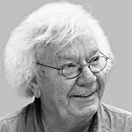
William Douglas Carlson
(USA)
- Glass Artist
- Professor Emeritus of
Art at the University of Miami
The final assessment for 2016 Kanazawa was again an exciting event bringing together considerable expertise, artistic innovation and a strong conceptual focus. The judging was rigorous and generated a great discussion with many divergent opinions. I will comment on several of the prizewinners that I feel are most noteworthy.
The Grand Prize winner, Ayako Hirogaki’s, ‘Ambiguity’ proves to be an accomplishment using optical issues and illusions. The sculpture appears to float free of gravity. The reference may be to sea creatures, as they drift in the depths of the ocean, was most successful. This artist must have had a considerable background in science and studio craft skills needed in making this unique object.
The Gold Prize winner was awarded to Sachi Fujikake. This precarious piece has an awkward kinetic pose. The translucent glass seems to vibrate with the delicate patterned surface. The title ‘Vestige’ is an excellent description of this work, as we speculate about its origins.
Silver Prize winner Ida Wieth, offers us a collaboration of materials that are rough in their forming but similar in their shared visual mission. This piece illustrates an anthropomorphic wisdom with its sharp edges and raw form.
Honorable Mention was awarded to Mio Kosaka for a multiple component piece that references sequences and measurements. Maybe the inspiration is medical or possibly recording the tides of the oceans or a musical score.
Meng Du was awarded an Honorable Mention for a group of pieces titled ‘Echo from the Highland.’ This piece tells a wonderful story, about collecting and keeping small objects or memories that are combined for an abstract storyline that we have all experienced.
Dina Priess Dos Santos’s ‘Ghostly Memories from My Time as an Air Hostess’, received my jurors’ award. This award winner’s sculpture builds a narrative about her background. With simple castings, she tells a story that we can all relate to; airplane food, travel delays and disposable utensils. This piece is most successful in its lack of perfection and having an ultimate aesthetic honesty…wabi sabi...the art of imperfection.

Jun Fujita
(Japan)
- Glass Artist
- Board member of
Japan Glass Artcrafts Association
I would like to express my respect and gratitude as a glass artist to the organizers for continuing the International Exhibition of Glass Kanazawa, for over thirty years. This year marks the 13th anniversary. For those who aspire to be glass artists as well as those who follow the trade of glassware, exhibiting their works at this exhibition is encouraging and stimulating as a goal. Some jurors and people who worked hard to continue this exhibition have since passed away. I entered the venue for the Final Assessment with the resolve to not forget about their passion to enhance the prosperity of glass art.
After the jurors had taken their time to look at all the works, we voted on the works we admired. Each juror expressed his/her opinions and we decided on the award-winning works. Although the jurors voted without knowing the artists' nationality, many works by Japanese glass artists were selected. I'm afraid that in Japan, contemporary glass art has been less appreciated than that of other materials. This time, Japanese glass artists' works received positive assessment from the jurors of the United States, France and Denmark, which has encouraged them to be more confident in their works.
I was amazed by the ambiguity of the Grand Prize winner. The title itself is precisely Ambiguity. The three dimensional object, chemical fabric with numerous embedded glass pins, looks like an embryonic or spiritual motion. The Gold Prize winner, Vestige has its distinct shape of only glass. The artist deposited glass sheets and then made the surface uneven by blowing on it. The work gives us a clean impression and a superb performance of hand-made and breath-blown work.
Ms Yoriko Mizuta, with whom I was a juror at the Preliminary Assessment for the previous exhibition, passed away suddenly last summer. I am so sorry about her death because I had believed that she would be involved in many more critiques and projects. Her previous comments expressed her apprehension about the insubstantiality of the artists' inner impulse. Exploring an unknown field should be an artist's passion, that should show their originality. However, it carries with it a risk to wander into a blind alley. I myself want to express my own strong emotion in my works without being restricted by experience or age.

